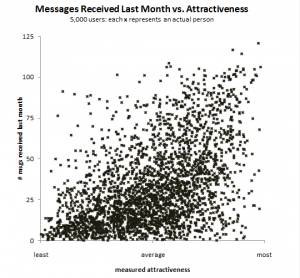Big Data Drives: Intertwining Business and Technology
 “Some say data is the new black,” laughs former Linkedin data scientist, DJ Patil on stage during the Mesh Conference in Toronto, Wednesday, May 23, 2012. Patil’s presentation ‘Managing Life in a Chaotic World via Data,’ starts with an audience experiment to show us that “we are all data products,” according to Patil. We all do complex processing for mental algorithms that make predictions about ourselves and our environment. Yet, we all “suck at data processing” as individual people in a very complex environment. Although, for Patil, collecting, processing and analyzing data is a very powerful tool in creating more sophisticated organizations; “using data not to drive us off a cliff, instead to iterate.”
“Some say data is the new black,” laughs former Linkedin data scientist, DJ Patil on stage during the Mesh Conference in Toronto, Wednesday, May 23, 2012. Patil’s presentation ‘Managing Life in a Chaotic World via Data,’ starts with an audience experiment to show us that “we are all data products,” according to Patil. We all do complex processing for mental algorithms that make predictions about ourselves and our environment. Yet, we all “suck at data processing” as individual people in a very complex environment. Although, for Patil, collecting, processing and analyzing data is a very powerful tool in creating more sophisticated organizations; “using data not to drive us off a cliff, instead to iterate.”
Patil goes on to explain that the speed we do analytics has massively changed, opening up a world of opportunities when facing big data challenges. “We are moving from processing to taking action, shifting our frame,” says an excited Patil. Timely, accurate measurements are suddenly at our fingertips, not just in the world of tech, but in the world of business. Low latency and high speed controls give us the ability of this action Patil speaks of. Like never before, a new focus on form, function and iteration, that is accessible can give business a more sophisticated culture. It is this intersection of business and technology in understanding data, like Power BI training courses, to augment our decision-making that gives us both tools for more educated progression.
According to Patil, there are
Four Functional Areas of Data Science:
- Decision Sciences and business intelligence: Understanding the user, reporting dashboards, and other ways to democratize through visualization
- Fraud, abuse, security and risk: Data for good over evil
- Data Infrastructure: owning the data warehouse. Developing tooling for infrastructure.
- Product, marketing and sales analytics.
 Patil goes on to elaborate on the fourth point through his experiences with Linkedin. His colleague (formerly of Aster Data) light bulb product feature of, ‘People You May Know’ which made Linkedin a better product by connecting the user in a more familiar way.
Patil goes on to elaborate on the fourth point through his experiences with Linkedin. His colleague (formerly of Aster Data) light bulb product feature of, ‘People You May Know’ which made Linkedin a better product by connecting the user in a more familiar way.
He laughs about the press they got with data measurements of job titles, including the word ‘ninja’ showing a steady growth over the last few years, which Linkedin received a lot of main stream press regarding. In fact, data driven companies like OkCupid alongside Linkedin often capitalize off the press they receive through releasing data surveys (Patil gives the example of ‘The Mathemtics of Beauty,’ a blog post by OKCupid which received thousands of hits upon the first week of publish after a comment in a national newspaper). The above examples, are two strong points in reaffirming Patil’s use of big data in product, marketing, and sales analytics in progressing a business at a time where this is more accessible then ever. “Data facilitates experience,” notes Patil, “set a culture in your organization that is data driven, democratize, make your data accessible.”
The presentation ends with a shift towards the applications of data in the health industry, a national problem plaguing more countries than the US. “Intuition is where it starts,” says Patil, before going on to introduce DataKind, during the question period, a company dedicating data scientists to analyzing problems in developing worlds, giving us the opportunity to take action on this democratized knowledge. Using data for good is an important cause advocated by Patil. He believes that data applications can play a positive role across many differing types of organizations. Data can be a very safe and constructive resource, whether for the organization or returning back to the individual. Patil’s goals are to let us know that as business and technology industry individuals and organizations at the Mesh Conference, we have the power to use data to make more sophisticated organizations with more opportunity than ever before.









